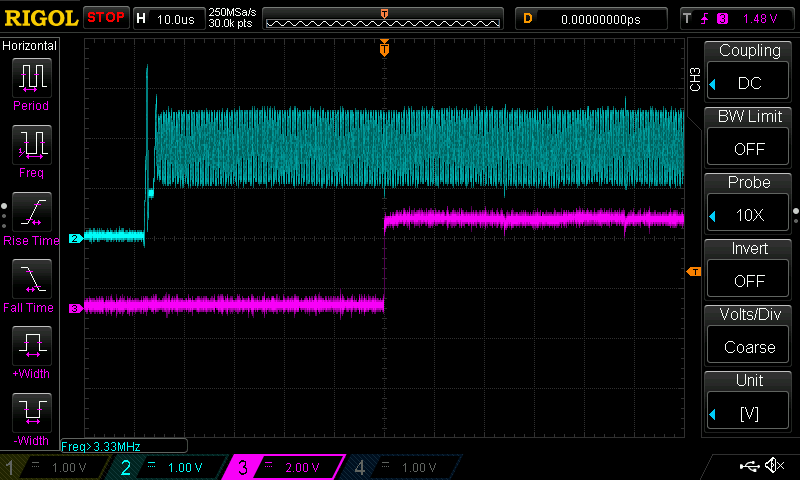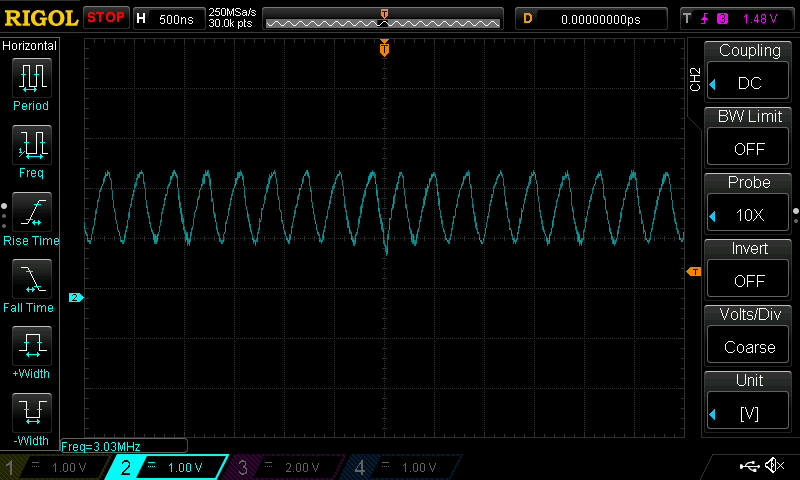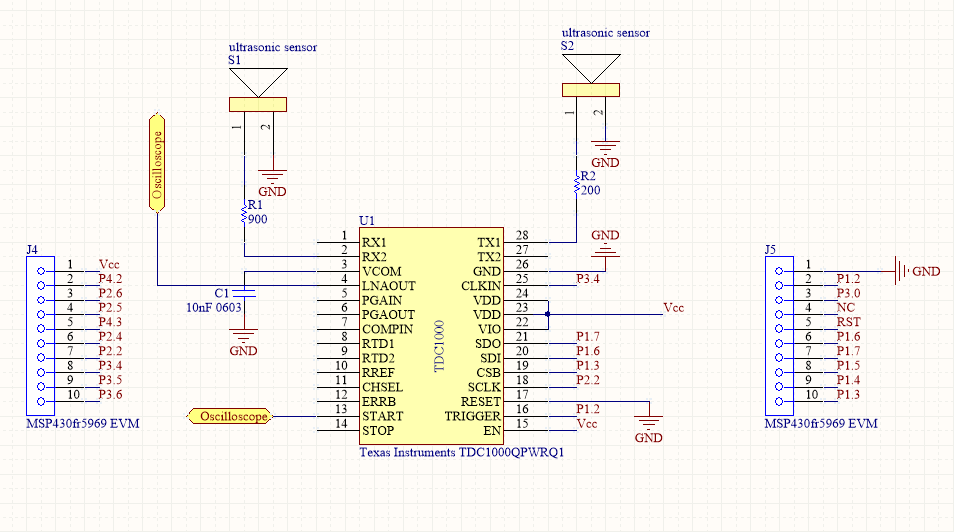Hello everyone,
I've been having problems with TDC1000's LNA. I simply wanted test the LNA and connected 900 Ohm resistor, which is connected to RX2, to ground and probed LNAOUT. Results are shown below. The blue trace show LNAOUT pin and the purple trace is the START pin of TDC1000 as it is seen LNAOUT oscillates around roughly VCOM. I use LNA in the resistive mode, mode 0 and everything is default. I also probed VCOM and it looks OK. What might the reason be? By the way I'm not using the EVM I built my own circuit. So far I was able to use TX channels and use SPI to communicate with TDC1000.



